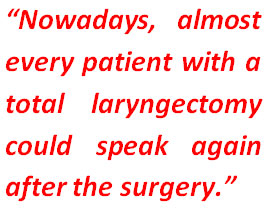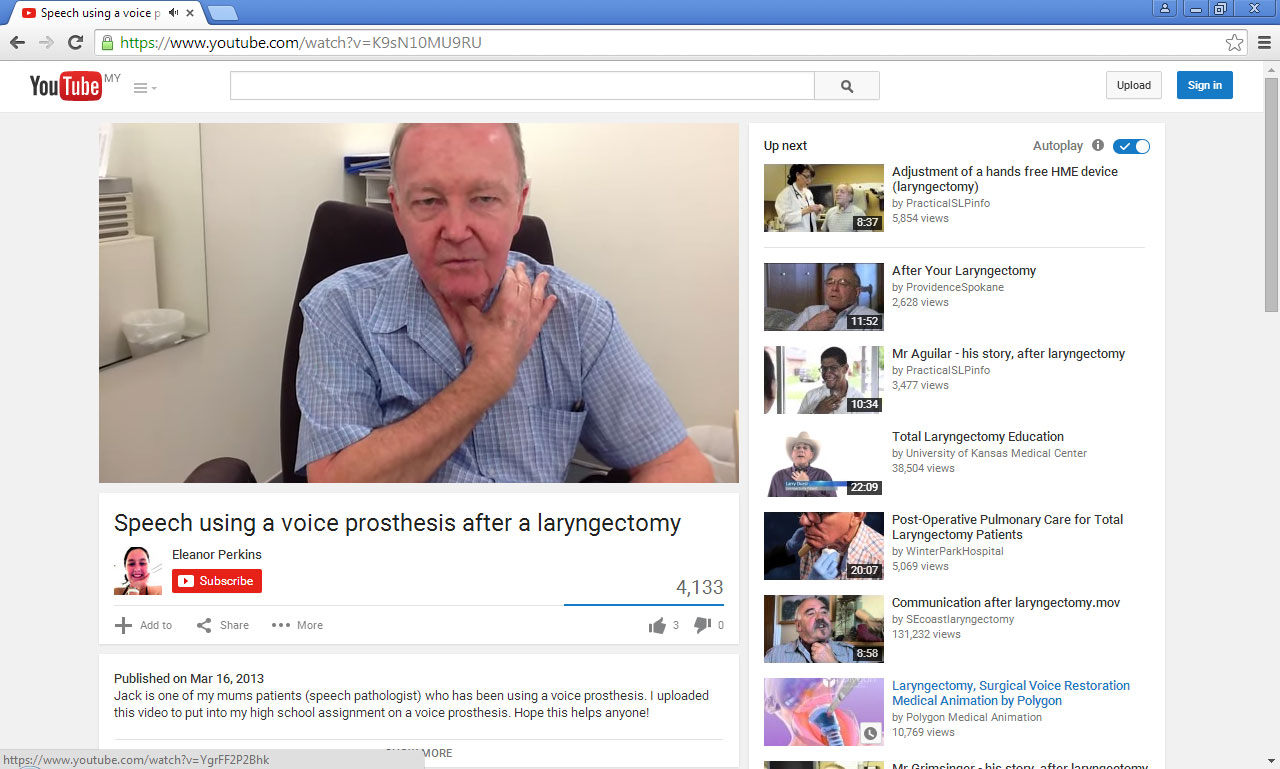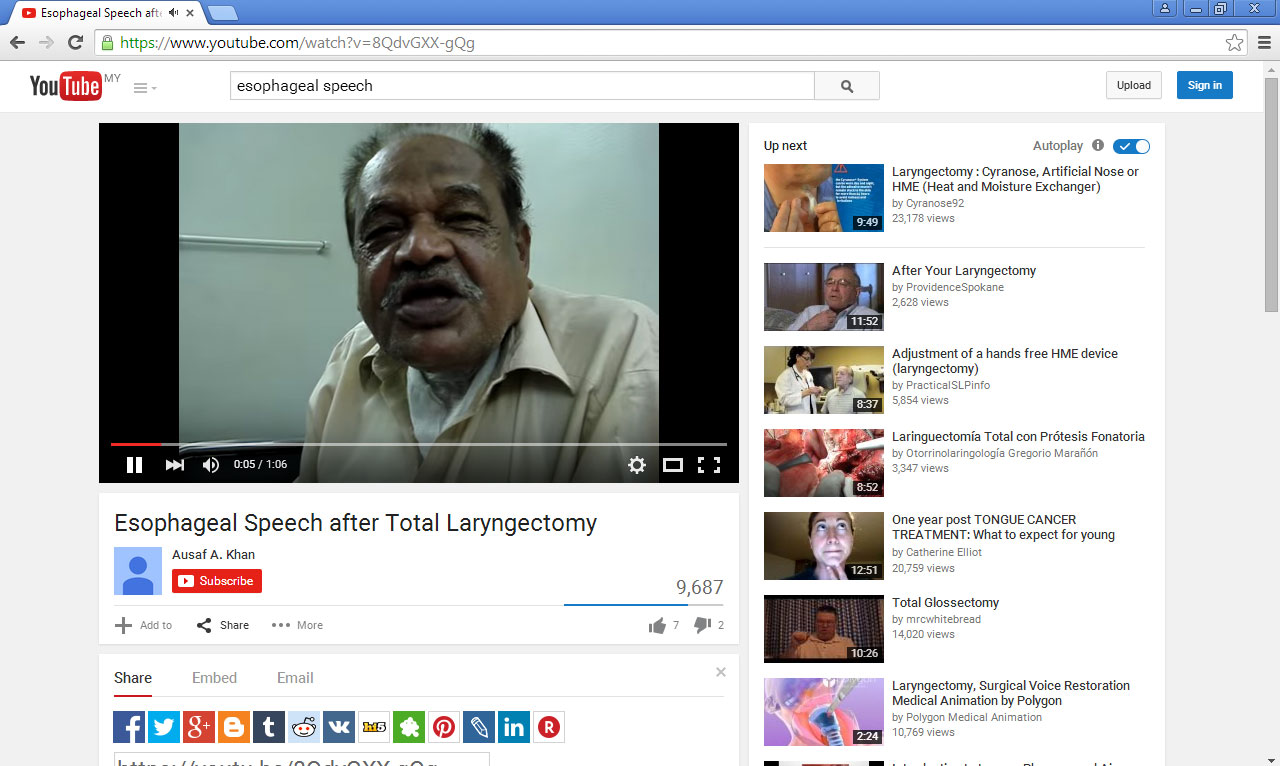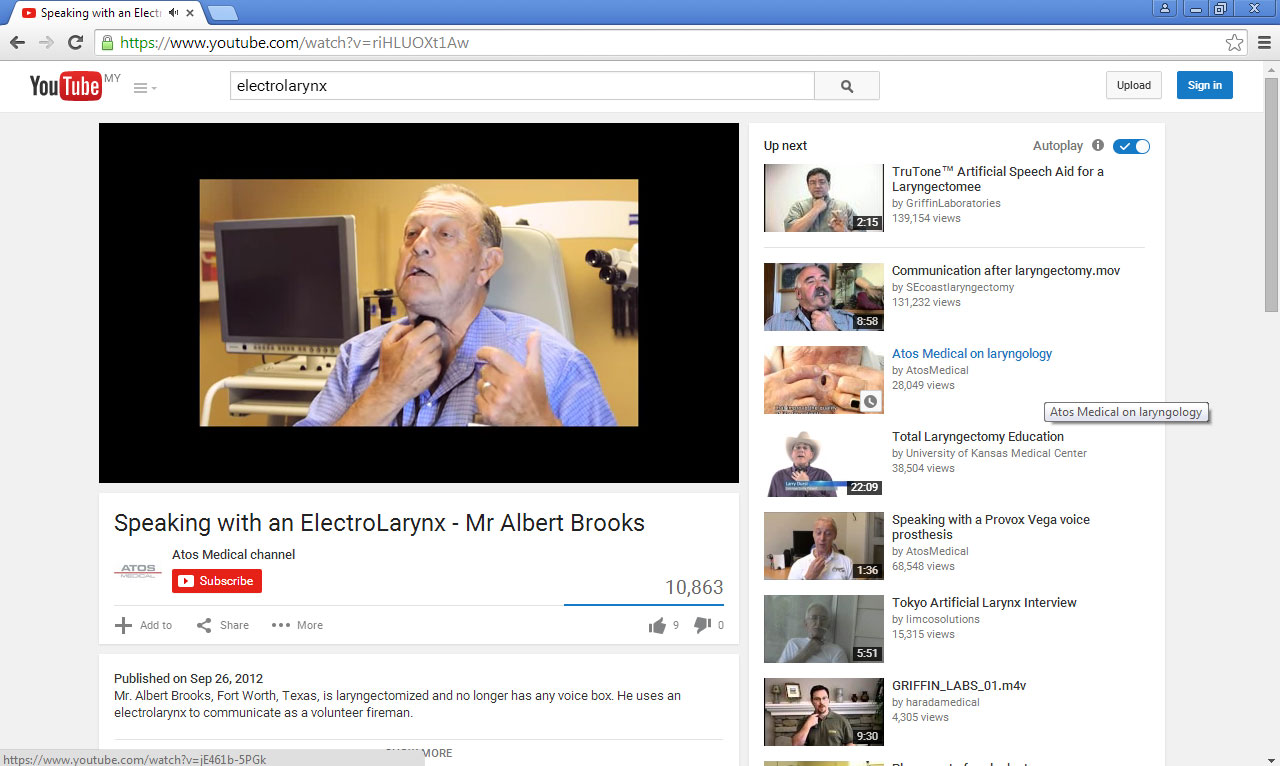Many patients with cancer of the throat (larynx) are concerned to have total laryngtectomy surgery. They thought that they would never be able to speak after the surgery. Actually, there are several ways to allow them to speak even without having a voice box.
Total Laryngectomy

Total laryngectomy is a surgical procedure done to remove the entire throat. It separates the lung from the airway tract such as mouth and nose. Following the removal, the surgeon makes a hole in front of the neck called a stoma. Patient breathes through this opening. Removal of the throat caused a loss of vocal cord which is used for voicing. The patient will be voiceless and unable to speak. Doctors and speech-language therapist will identify and suggest appropriate and suitable methods of communication to the patient. Among them are voice prosthesis valve, esophageal speech, electrolarynx and electronic speech-generating devices.
Role of Speech-Language Therapist
Speech-language therapist will provide information on voice restoration and alternative communication methods available. Before the surgery, a patient should gather information as below:
- Types of voice restoration and communication methods available
- Demonstrations and trials of voice restoration and communication devices
- Videos of voice restoration and communication devices
- Meeting total laryngectomy patients practicing voice restoration or other communication methods and devices.
Types of Voice Restoration Program
There are three types of voice restoration program mainly offered to Total Laryngectomy patients.
- Voice prosthesis valve
- Esophageal Speech
- Electrolarynx
-
Voice Prosthesis Valve
During or after the surgery, the surgeon will make a small hole in the windpipe (trachea) and the food pipe (esophagus). It is called a tracheo-esophageal puncture (TEP). Then, he will insert a voice prosthesis valve in the opening that connects the two pipes. This is a one way valve that could prevent food and drinks from leaking into the windpipe.
How to use the voice prosthesis valve:
- Close the stoma with your thumb
- Air is trapped and directed into the voice prosthesis valve
and producing vibration and noise - Move your lips, tongue and jaw to speak
- You are now speaking!
Tracheo-esophageal puncture and voice prothesis valve
require regular maintenance and frequent replacement.
Patient needs to practice using voice prothesis valve for talking.
Patient could change to a special valve that is freeing up hands.
Video 1: Patient with a total laryngectomy speaks using a voice prosthesis valve -
Esophageal Speech
Esophageal speech is also known as “burp-talking”. It doesn’t require any tool and device.
How to produce an esophageal speech:
- Inject adequate volume of air into upper esophagus
- Immediately project the air back into mouth in a controlled manner
- Shape your lips, tongue and jaw to speak. You are now speaking with esophageal speech.

Video 2: A patient is speaking in esophageal speech. -
Electrolarynx
Electrolarynx is a battery-operated electronic machine similar to the size of an electronic shaver. Patients should practice using electrolarynx to produce better sounding speech.
How to use an electrolarynx:
- Hold the electrolarynx and place it against the neck or below the chin
- Press the button on the electrolarynx to initiate vibration and sound
- Move your lips, tongue and jaws to speak
- You are now speaking with your electrolarynx

Video 3: A patient is talking using an electrolarynx.
Electronic Speech-Generating Devices
In some patients, all of the above methods may not be suitable to help with voicing after the surgery. Speech-language therapist will suggest alternative communication methods called electronic speech-generating devices.
There are several types of speech-generating devices. Among them are:
- Electronic keyboard – type in sentences that are electronically spoken
- Pictures – press images for words and sentences that are electronically spoken
- Smart phone – contain software that could generate electronic speech

Video 4 : A patient is talking using a speech-generating device
Need any help?
If you need further assistance and information about voice restoration after a total laryngectomy, you can contact Speech-Language Therapist or Otorhinolaringologist in hospital near you.
References
- Handheld Communication Devices. http://www.turningpointtechnology.com/Comm/HTHandheld.asp
- http://www.youtube.com
- Laryngeal Cancer. http://www.asha.org/public/speech/disorders/LaryngealCancer/
- Lombard, L: Laryngeal Rehabilitation. http://emedicine.medscape.com/article/883689-overview
- My Voice: Methods of Speaking After Laryngectomy. http://dribrook.blogspot.my/p/basic-skills-for-new-laryngectomees.html
- Voice Restoration After Your Laryngectomy. http://www.sw.org/cancer-institute/head-neck/voice/head-neck-voice-restoration
| Last Reviewed | : | 28 August 2020 |
| Writer / Translator | : | Wahida bt. Mohd Abdul Wahab |
| Accreditor | : | Nur Syuhada bt. Hosni |
| Reviewer | : | Nadwah bt. Onwi |







